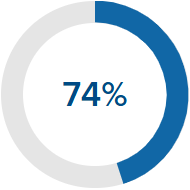New realities require new security models
Digital transformation is changing the way organizations conduct business. Traditional security models are not enough. As organizations grapple with new IT architectures, it is important they incorporate a security model that aligns with this new reality. IDC estimates that more than half of Fortune 500 companies with US headquarters have adopted the NIST (National Institute of Standards and Technology) Cyber Security Framework (CSF) as their primary control framework for cybersecurity.
Adoption of the NIST CSF as a control framework is a signal to potential business partners, customers, regulators, and the general public that the organization is serious about cybersecurity and is managing a comprehensive program.
What:
This module will help IT leaders focus on security priorities that deliver the largest return on effort in your program to develop digital trust and protect the organization’s vital data, applications and infrastructure. Learn the most effective programs and projects to “move the needle” on security.
Why:
Three out of four (74%) organizations have not yet created a security program to address their DX needs. Digital transformation forces enterprises not only to reconsider their security in terms of traditional risk management activities, but also to understand how their security reputation may affect their success. It’s important to evolve security programs to align traditional practices of risk assessment and cybersecurity controls with the more fluid, dynamic needs of DX.
How:
To plan the right projects as part of the NIST CSF, your organization needs the following steps:
- Establish your Business Goals for Security
- Identify Unwanted Outcomes
- Calculate Risk
- Focus on data
- Understand NIST basics
- Focus on the most effective outcomes
- Choose projects to implement NIST
